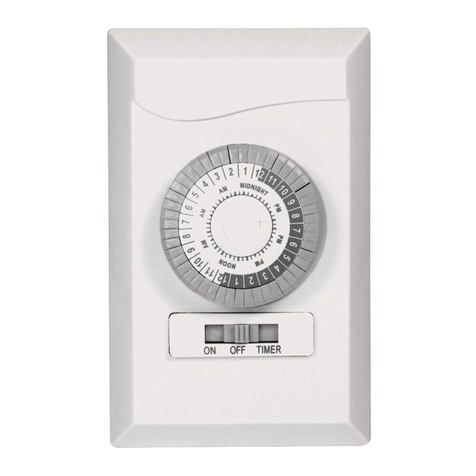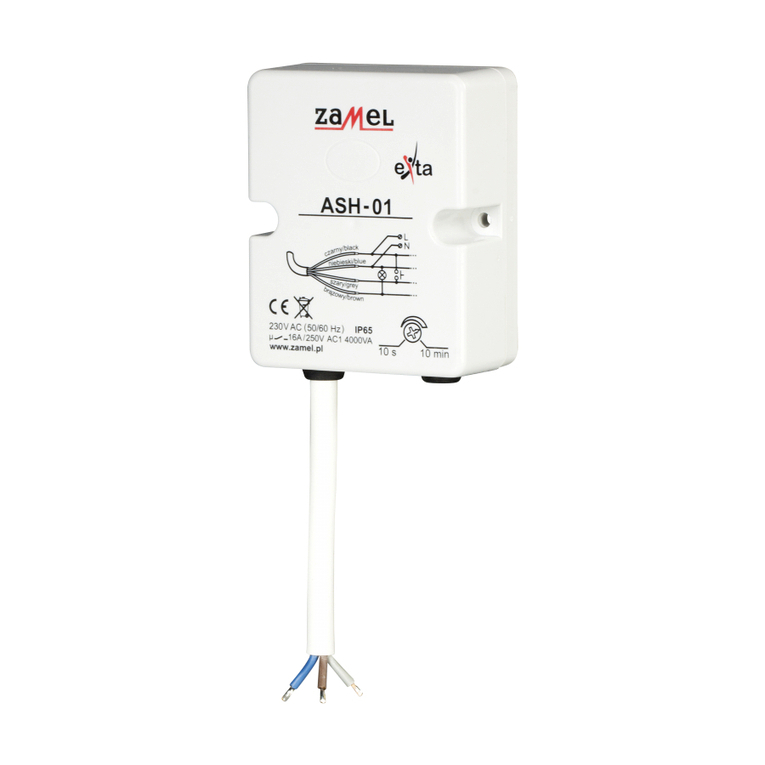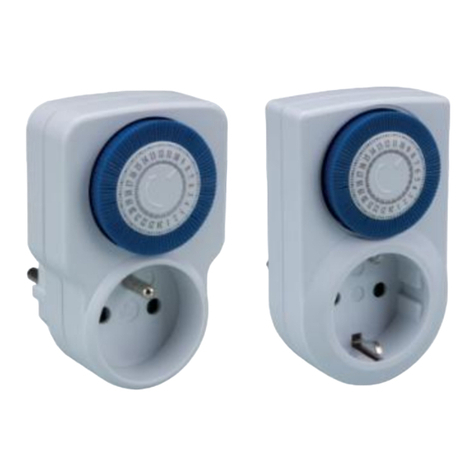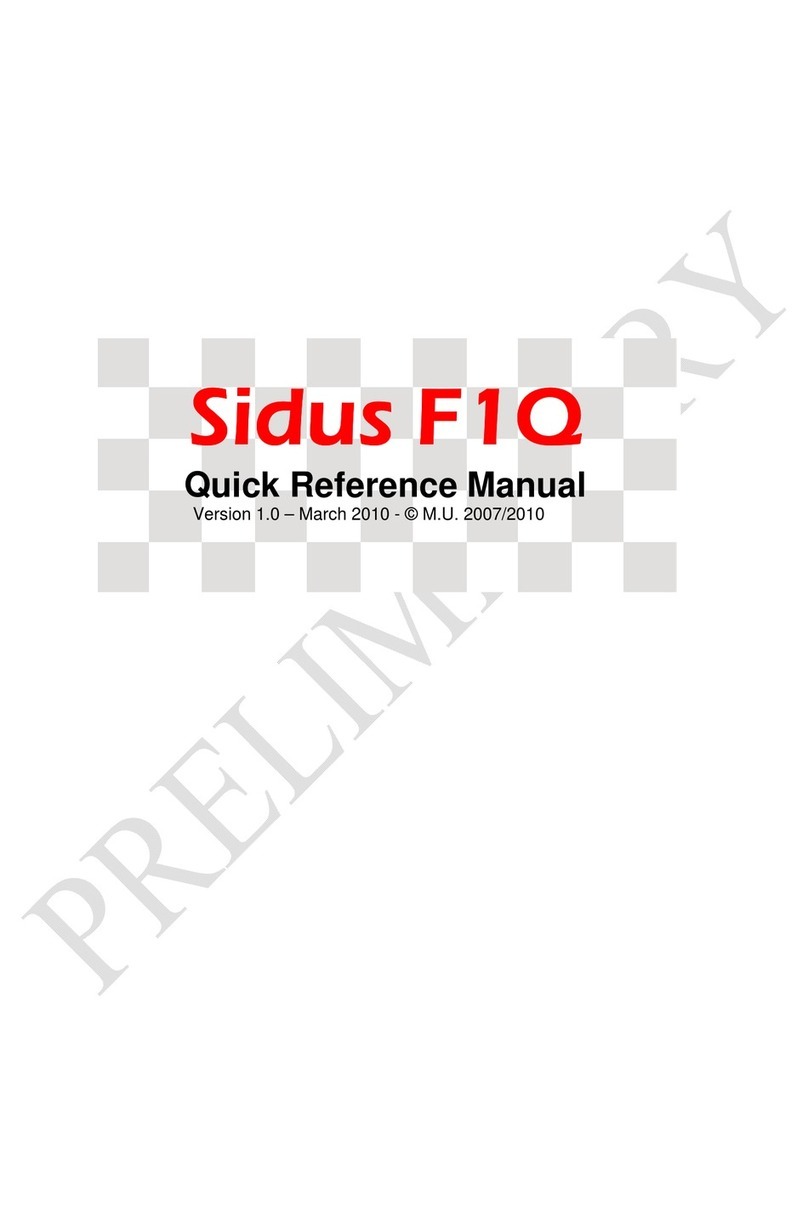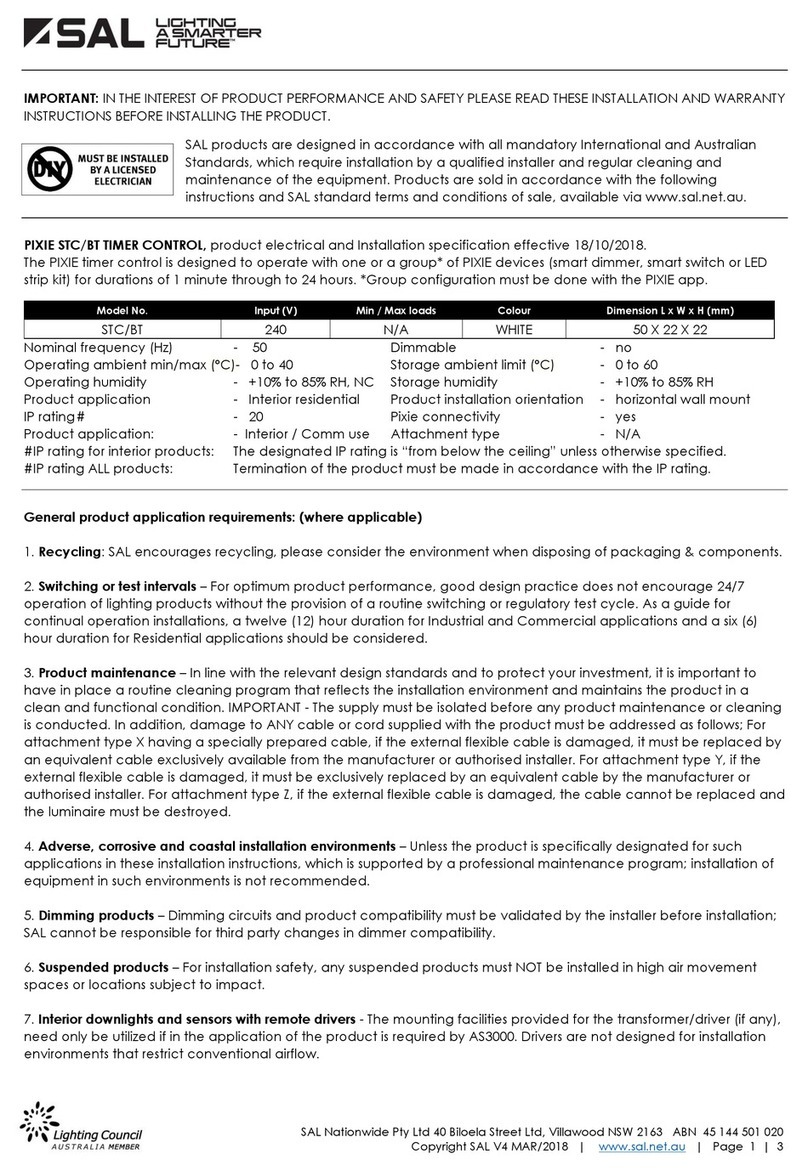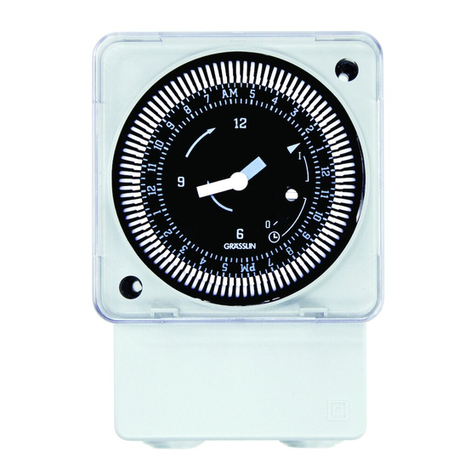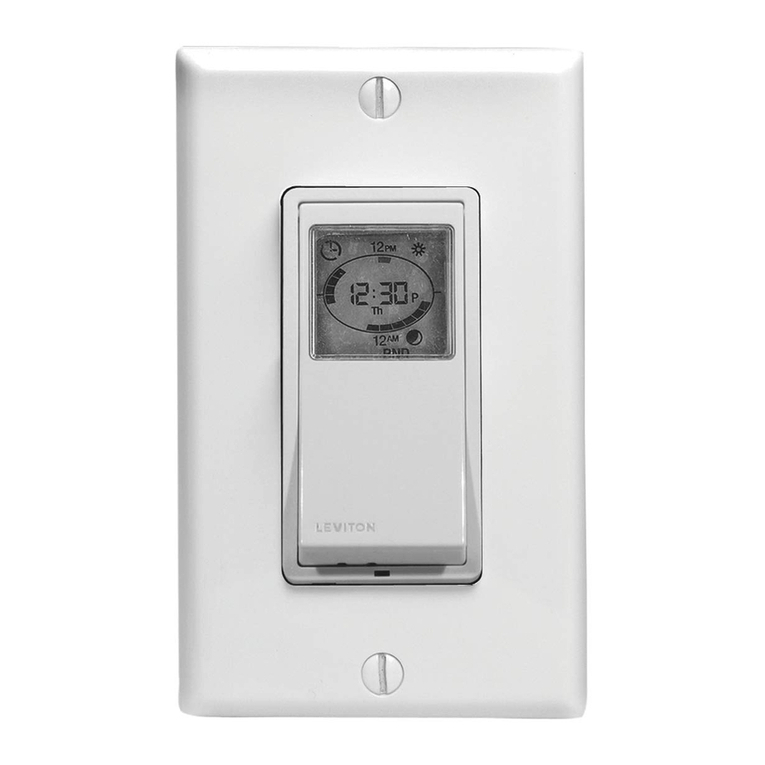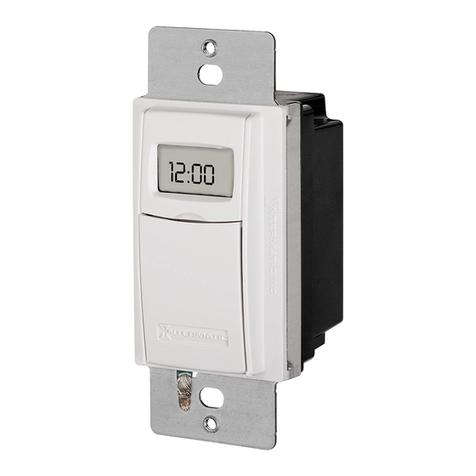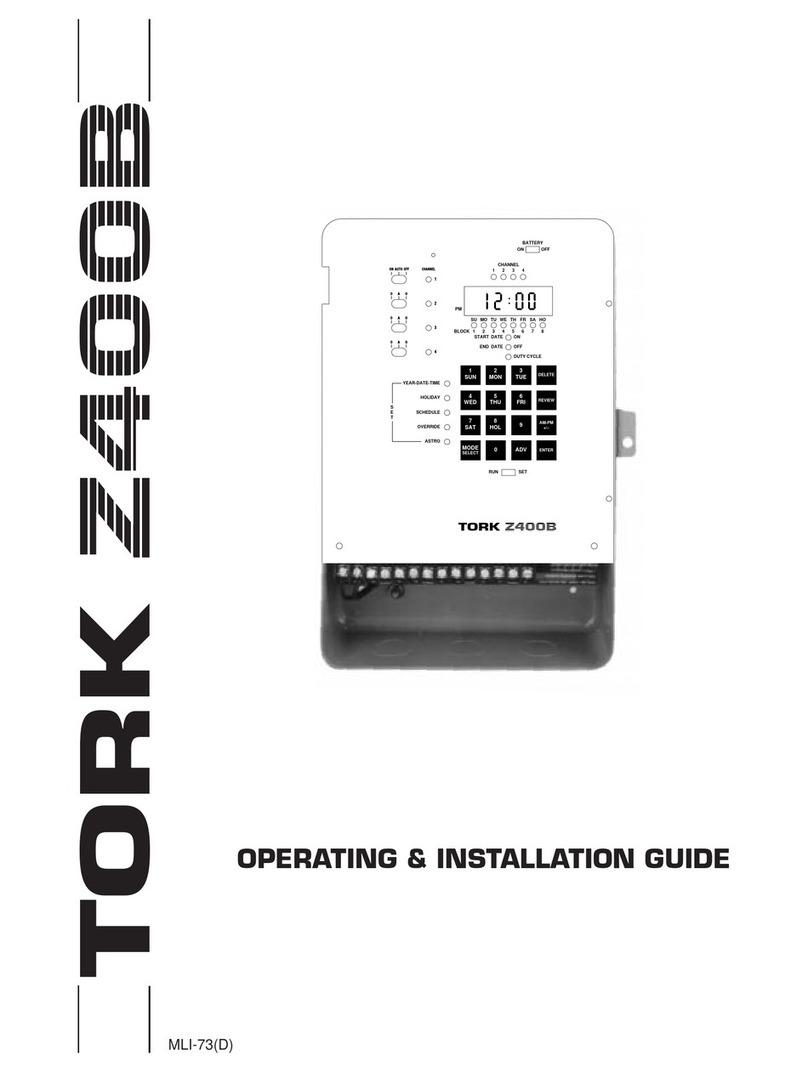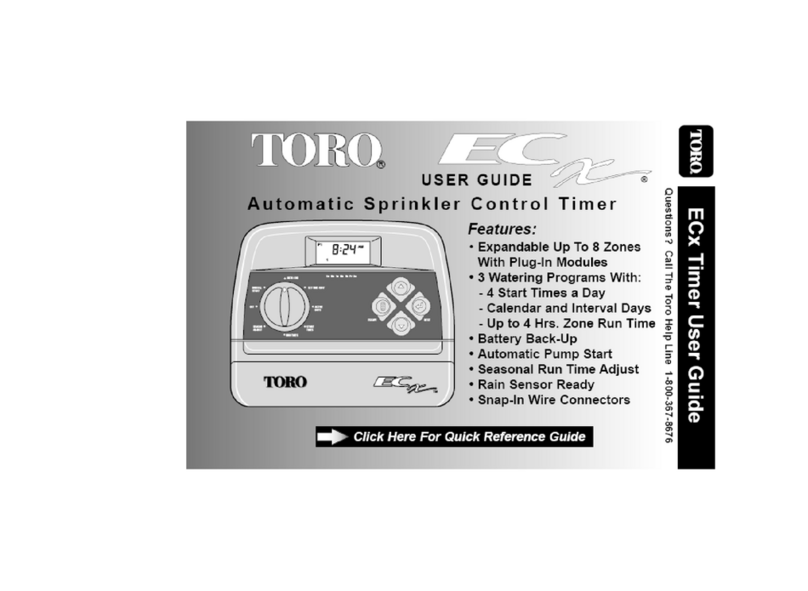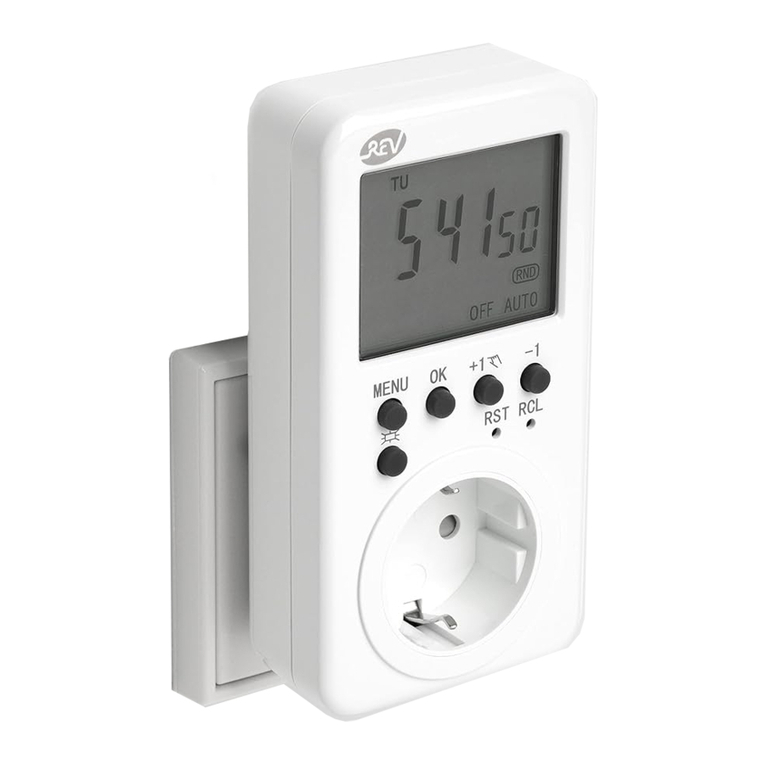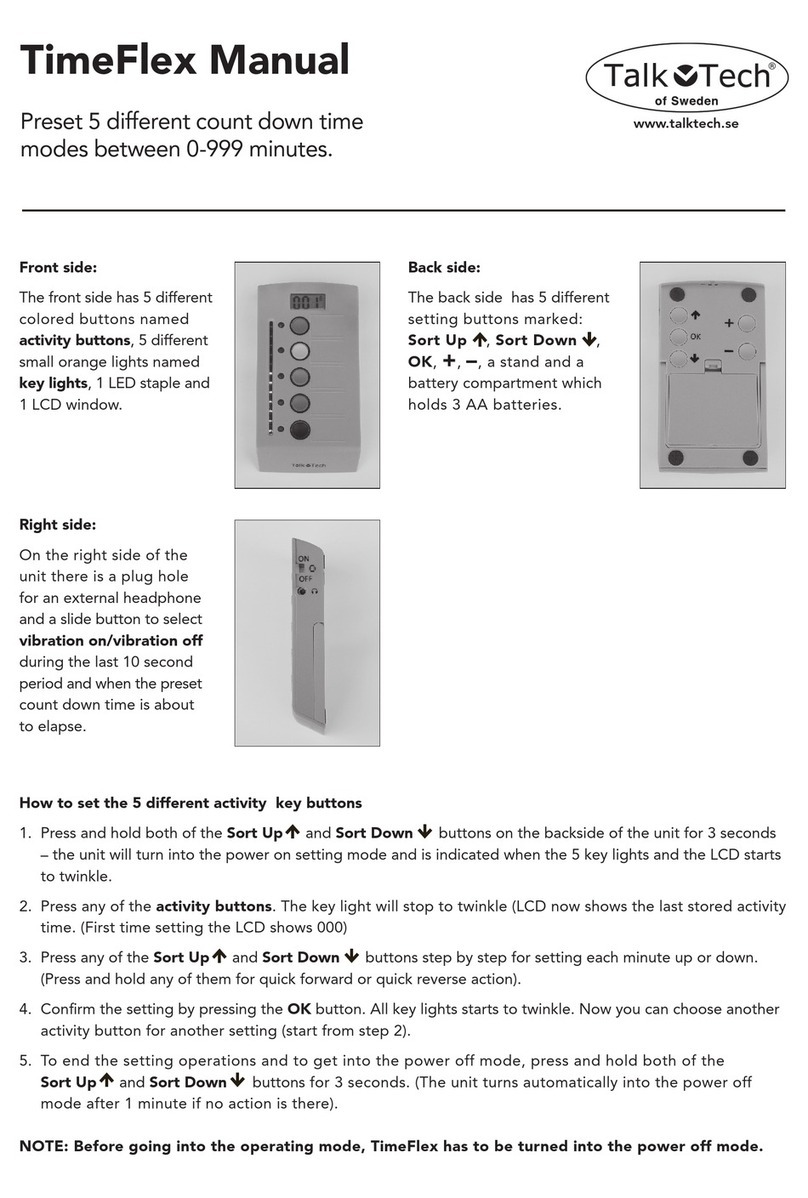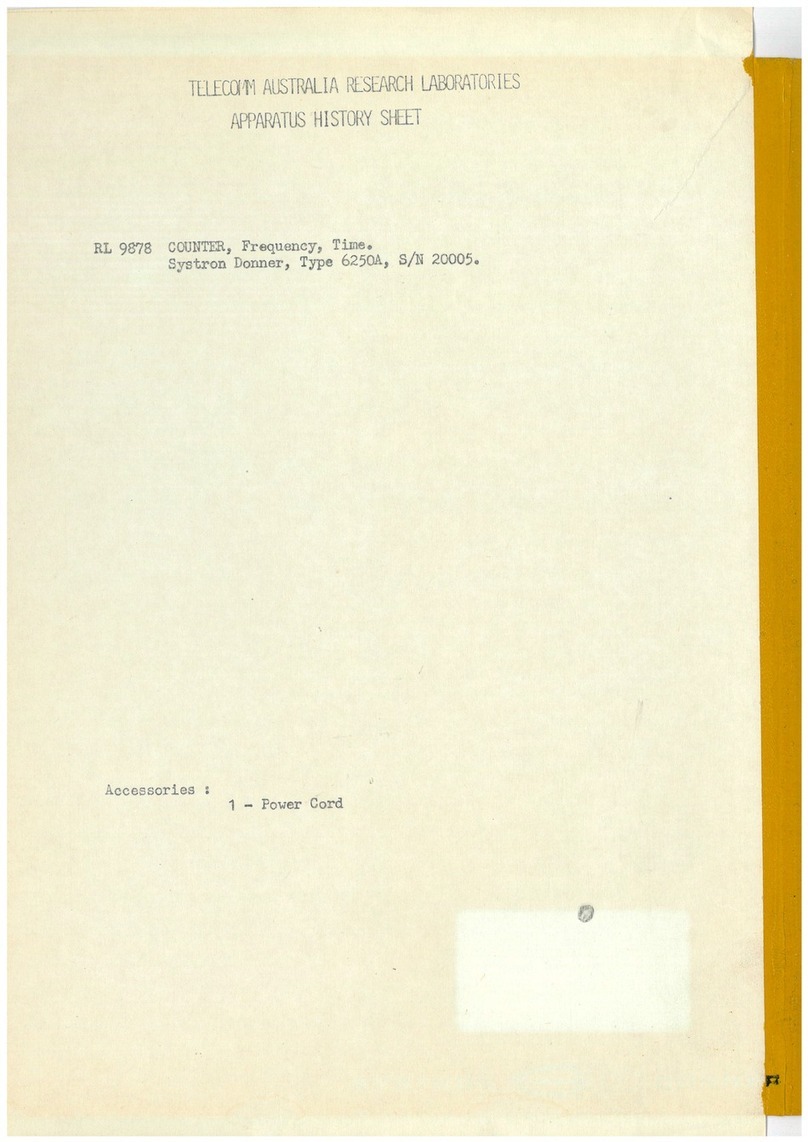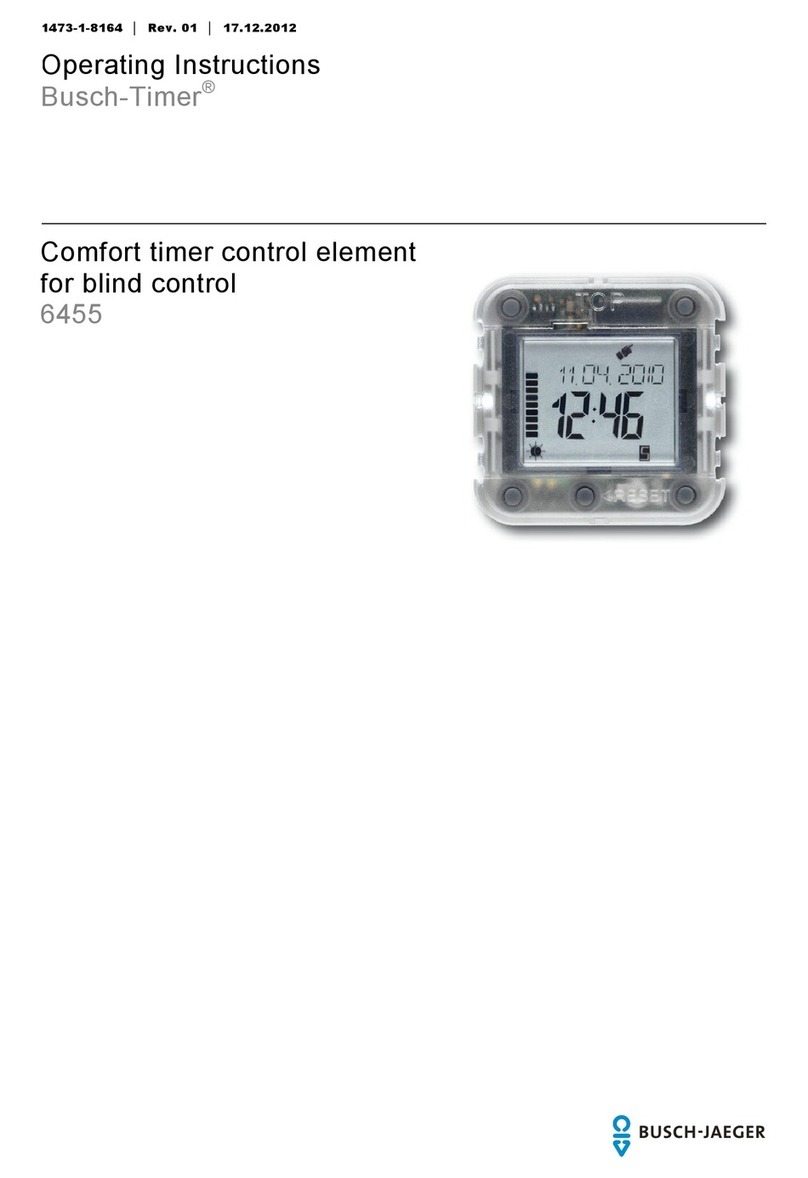Electronic Designs E40MH1 Instruction manual

INSTALLATION, OPERATION
& MAINTENANCE MANUAL
MODEL
E40MH1
DESCRIPTION
40-POSITION TIMER
WITH LED NUMERIC DISPLAY
ELECTRONIC DESIGNS INC.
1683 Rock Hill Highway
Lancaster, SC 29720
Phone: 704-545-1439 •Fax: 704-545-8345
Website: www.edi-usa.com
E-mail: [email protected]om

2
TABLE OF CONTENTS
Page Subject
3 General Description
3 Summary of Operating Modes
•4-20 ma Cycle Mode
•Hold-OFF Mode
•Continuous Cycle Mode
4 Remote Control Input
4 Pulse Output
4 Features
4 Mounting & General Wiring
5 Electrical Wiring for 4-20 ma Mode
5 Electrical Wiring for Hold-OFF Model
5 Electrical Wiring Continuous Cycle Mode
6 Warranty & Repair
7 Wiring Diagram
•4-20 ma Mode
8 Wiring Diagram
•Continuous Cleaning w/Option for Hold-OFF Mode

3
E40MH1
GENERAL DESCRIPTION:
Electronic Designs Incorporated’s (EDI) E40MH1 solid state timers are capable of switching
twenty (20) independent outputs. Each of the outputs has a switching capacity of 1 Amp at
110 VAC. By relocating the program wire from Position #40 (on the Timer) to the number of
positions desired, the timer will pulse only from Position #1 through the programmed number.
The LED display indicates the next output to fire.
The E40MH1 is equipped with dual functions, allowing the customer a choice of operating
modes. The timer can operate in response to a 4-20 ma signal from the Differential Pressure
Transmitter or it can operate as a Hold-Off timer with the off-time set on the timer.
Additionally it can operate in Continuous Cycle Mode. We recommend use of the EDI
Differential Pressure Transmitter in conjunction with this timer for optimum operation.
SUMMARY OF OPERATING MODES:
1. 4-20 ma Cycle Mode
The input is a 4-20 ma linear signal, corresponding to a differential pressure of 0-10
inches of water. The timer will continuously monitor the 4-20 ma input signal and
automatically adjust the OFF time for the output pulse. In this mode, the OFF-ADJ
potentiometer is inactive and does not control the duration of OFF time between each
output firing. (Switch SW1 must be set in the OFF position ↓)
During operation, as the differential pressure starts to rise, the timer will decrease the
OFF time in response. If the differential pressure should rise greater than the set point
level, the timer will pulse at the fastest OFF time rate of 3 seconds. As the differential
pressure decreases to and below the set point, the OFF time will proportionally
increase to a level which will maintain the desired set point differential pressure.
2. Hold-OFF Mode
In the Hold-OFF mode, the OFF time is preset by means of the OFF-ADJ
potentiometer on the timer (Time duration is set by operator). This provides a fixed
OFF time. The input signal to the timer is 110VAC, which is applied to the Hold-OFF
circuit of the timer. When 110VAC is applied to these terminals, the output pulse
becomes inactive until the 110VAC is removed. The timer resumes it’s cycle on the
next output to be fired. (SW1 must be in the ON position ↑)
This input enables the timer to start and stop the pulse cycle via auxiliary switch, such
as a Differential Pressure Transmitter, Computer Contacts or Pressure Switch.
3. Continuous Cycle Mode
Lastly, the timer can function as a continuous cycle timer, with no Hold-Off signal
applied. This is achieved by placing SWITCH SW1 in the ON position ↑.

4
REMOTE CONTROL INPUT:
TB 1 (located on upper board) also has provisions for 120 VAC Remote Control Signal. This
input enables the timer to be switched remotely between the 4-20 mA mode and the
continuous cycle mode.
PULSE OUTPUT:
TB 2 (located on lower board) provides a 120 VAC signal every time an output is pulsed.
This can be used to monitor timer operation or count pulses.
FEATURES:
•120 VAC 50/60 Hz, One phase
•One amp maximum capacity per output
•One amp fuse protection
•All solid state industrial quality construction
•Illuminated Digital indication of next output to fire, and indicates timer operation.
•Adjustable ON time 50 - 150 ms
•Proportional OFF time, minimum of 3 sec.
•Settable OFF time: 3-120 sec. If in Hold Off Mode.
•Remote switching between Continuous Clean and ΔP control
•Differential set point, adjustable 2 to 6 in. H2O
•UL Recognized to US and Canadian Standards under File E 60685
MOUNTING AND GENERAL WIRING:
1. Each timer is to be mounted in a dust tight and water tight NEMA rated enclosure.
2. It is recommended that conduit openings/holes be placed in the bottom of the enclosure
to prevent condensate or moisture from entering enclosure.
3. Mount the timer enclosure in a vibration-free area. (Use isolators to mount timer to sub
plate.)
4. Run supply wiring to the timer, 120Vac, 1 Phase, 50/60 Hz from the line circuit protector.
5. Run wiring from the timer to the pilot valve box.
6. SWITCH (SW1) position must be placed per mode of operation desired.

5
ELECTRICAL WIRING FOR TIMER USED IN 4-20 ma MODE:
1. Connect 120VAC supply to NEUTRAL and HI (TB 1) (located on lower board).
2. Connect TRANSMITTER’S 4-20 ma Transducer output to TIMER 4-20 ma input terminal
block. Connect Plus to Plus (+) and Minus to Minus (-). (TB 1) (located on upper board).
3. Connect one side of each valve to the COMMON TERMINAL (TB 1) (lower board).
4. Connect the other side of each solenoid valve to the SWITCHED OUTPUTS
(TERMINAL 1 through 40), sequentially (TB 3 & TB 4) (located on lower board).
5. SWITCH (SW1) OFF position ↓for this mode of operation. This will disengage the OFF
ADJ potentiometer control, timer will respond automatically to the 4-20 ma signal.
6. Adjust the “inches H2O” Potentiometer to the desired set point.
ELECTRICAL WIRING FOR TIMER USED IN HOLD-OFF MODE:
1. Connect 120VAC supply to NEUTRAL and HI (TB 1) (lower board).
2. Connect external 120VAC Hold-Off Signal to the Timer Hold-Off Terminal (TB 1) (upper
board).
3. Connect one side of each valve to the COMMON (TB 1) (lower board).
4. Connect the other side of each solenoid valve to the SWITCHED OUTPUTS
(TERMINAL 1 through 40), sequentially (TB 3 & TB 4) (located on lower board).
5. SWITCH (SW1) ON position ↑for this mode of operation. This will engage the OFF
ADJ potentiometer control, OFF ADJ is now operator settable.
6. Adjust the “inches H2O” Potentiometer to the desired set point.
FOR USE AS CONTINUOUS CYCLE TIMER:
1. Connect 120VAC supply to NEUTRAL and HI (TB 1) (lower board).
2. Connect one side of each valve to the COMMON TERMINAL (TB 1) (lower board).
3. Connect the other side of each solenoid valve to the SWITCHED OUTPUTS
(TERMINAL 1 through 40), sequentially.
4. SWITCH (SW1) ON position ↑for this mode of operation. This will engage the OFF
ADJ potentiometer control, OFF ADJ is now operator settable. Timer will cycle
continuously.

6
WARRANTY & REPAIR:
All EDI products come with a one year warranty against parts and/or manufacturing defects.
Please see our terms & conditions or contact us for additional details.
On all products that are over a year old, EDI offers a full test and repair facility at our
Lancaster, SC. Once we receive a board, it will be logged in, tested, evaluated and
then the customer will be advised of the cost to repair or replace. Please contact EDI
for additional details on our repair services.

21
TB3
TB1
TB2
TB4
COM
N
HI
SOLENOID
COMMON
(120 VAC N)
120 VAC 60 HZ
INPUT POWER
SW HI NEUT
PULSE OUTPUT
Lower Board
TB1
Upper Board
H2O OFFADJ ONADJ
04
1
2
3
4
5
6
4-20 mA
INPUT FROM
Δ
P
REMOTE CONTROL
120 VAC - INPUT
HOLD-OFF
120 VAC - INPUT
+
-
HI
NEUT
HI
NEUT
SW 1ON
OFF
40
1 2 3 20
A
20
120 VAC SWITCHED
OUTPUTS TO
SOLENOIDS
(120 VAC HI)
E40 MH1, 40 POSITION TIMER
4-20
M
A MODE
PHYSICAL DIM:
9" X 11" w
MOUNTING DIM:
8.5" X 10.5"
40
PROGRAM WIRE
EDI
HEWITT, NJ 07421
NOTES:
1. The Timer switch, SW1, must be in the OFF
position. The DP Transmitter's 4-20
M
A
signal automatically adjusts the Timer OFF Time.
2. Set the Timer H
2
O control to the desired
working pressure
3. The program wire should be placed in the desired
position for the numbers of outputs required.

21
TB3
TB1
TB2
TB4
COM
N
HI
SOLENOID
COMMON
(120 VAC N)
120 VAC 60 HZ
INPUT POWER
SW HI NEUT
PULSE OUTPUT
Lower Board
TB1
Upper Board
H2O OFFADJ ONADJ
04
1
2
3
4
5
6
4-20 mA
INPUT FROM
Δ
P
REMOTE CONTROL
120 VAC - INPUT
HOLD-OFF
120 VAC - INPUT
+
-
HI
NEUT
HI
NEUT
SW 1ON
OFF
40
1 2 3 20
A
20
120 VAC SWITCHED
OUTPUTS TO
SOLENOIDS
(120 VAC HI)
E40 MH1, 40 POSITION TIMER
CONTINOUS CLEANING WITH
OPTION FOR HOLD-OFF
PHYSICAL DIM:
9" X 11" w
MOUNTING DIM:
8.5" X 10.5"
40
PROGRAM WIRE
EDI
HEWITT NJ 07421
NOTES:
1. Timer Switch, SW1, must be
in the "ON"
↑
position.
2. Adjust "ON" and "OFF"
times on the Timer.
3. Program wire should be placed
in desired output position.
4. For Hold-Off Mode:
Timer starts cycling when
HIGH set point is reached
and continues until
Δ
Pfalls.
Signal is from external source.
Table of contents
